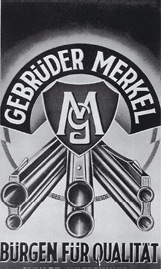| Der_Jaeger |
| (.375 member) |
| 19/01/09 11:32 PM |

|
|
|
You can use a laser with good effect during the manufacturing process and afterwards to align your open sights or scope to the general point of impact of the bullet and probably at least get the bullets properly on the target at 100 yards, but the laser will not account for the barrel harmonics of the projectile traveling down it's length and for the way that the barrel will release that bullet at the muzzle. The latter can only come from actual testing while the barrels are being stressed by the passing projectile.
If I were building a rifle, I would most certainly use a laser to make the adjustments necessary to ensure that the bores are aligned exactly with the axis of the sighting plane.
Double rifles are built to a specific bullet weight and velocity and, providing the customer uses that same load, will generally get the same results. Double rifles generally are not conducive to customer alterations after being built.
Bolt action rifles are built to exact tolerances as well, the good ones are anyway, and it's left to the customer to determine which load works best with the rifle's dynamics and chosen optics. There are, however, bolt rifles built to a specific load, but the maker is simply doing the job typically left to the consumer. Bolt actions can more easily be altered by the customer after being built.
In general, both work well, but regulating the double rifle requires more man hours and, consequently, demands a higher price.
I wouldn't be surprised if the best makers use a laser to make the initial adjustments to the barrels and use them to fine tune during the process.
In either case, point of impact will still vary based on altitude, temperature, barrel heat, the point at which you place your rest, etc.....